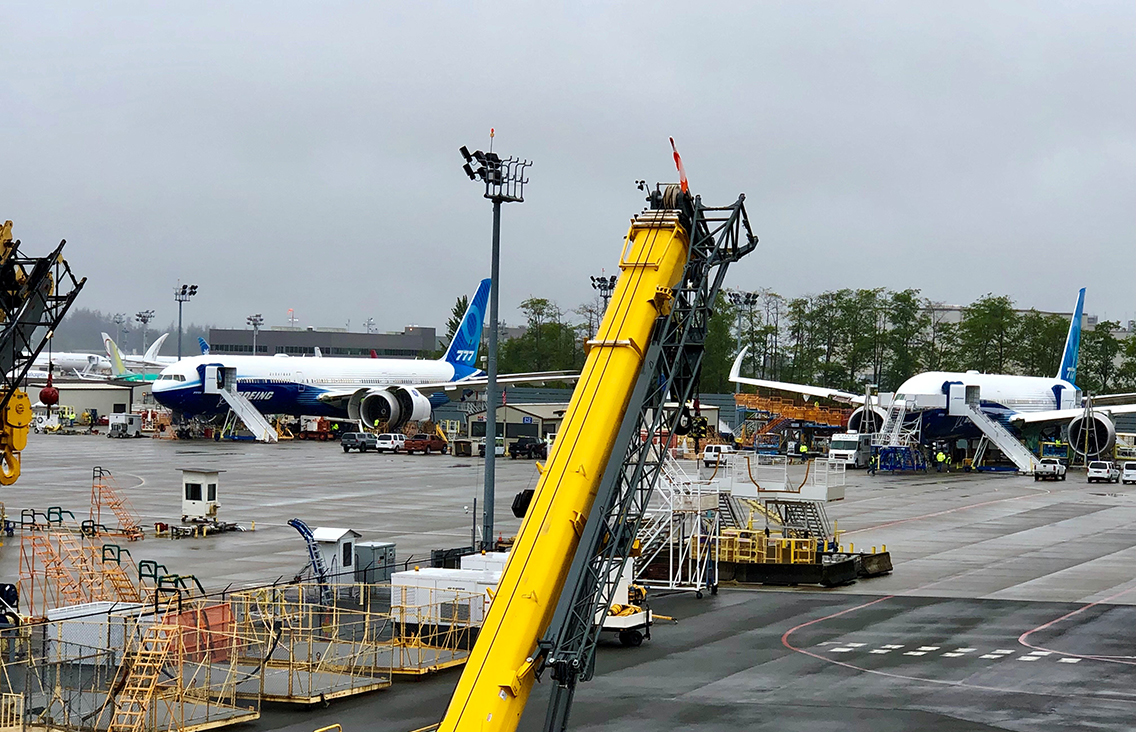Boeing has now rolled out the second 777X as it readies the aircraft for its first flight, expected late next month.
Inside the factory, the 3rd and 4th aircraft are complete and the first two production aircraft for Emirates are under construction.
The first Emirates 777-9X sports the “777X logo” on the folding wingtip, while the second sports the airline’s tail logo design.
See our tribute to the 747’s 50th year.
Boeing will not comment on the status of the flight test program and while some slippage is apparent observers tell AirlineRatings.com that it may not impact the overall delivery.
AirlineRatings.com was given special access to the production line and walking around the 777-9X you are overwhelmed by the giant jet. It is massive.

The larger windows are also apparent as is the huge size of the GE G9X engines.
The driving force behind the 777X is Emirates President Sir Tim Clark, whose airline is the lead buyer with an order for 150.
Sir Tim describes the 777X as “an absolute peach”.
Key to his enthusiasm is the aircraft’s economics and greater space — it is 20 per cent more efficient per seat than the industry’s long-time benchmark the 777-300ER and its cabin is wider with bigger windows.
The Boeing 777X combines the best features of the current 777 with a longer fuselage, new engine and the composite wing design from the Boeing 787.

The 777-9X seats more than 400 passengers, depending on an airline’s configuration choices.
With a range of more than 8,200 nautical miles (15,185 km), the aircraft will have the lowest operating cost per seat of any commercial aircraft says, Boeing.
The second member of the family, the 777-8X, will be the most flexible jet in the world claims Boeing. The aircraft will seat 350 passengers and offer a range capability of more than 9,300 nautical miles (17,220 km).

It also features 20 per cent larger windows and lowers pressurization altitude to reduce jet lag.

























